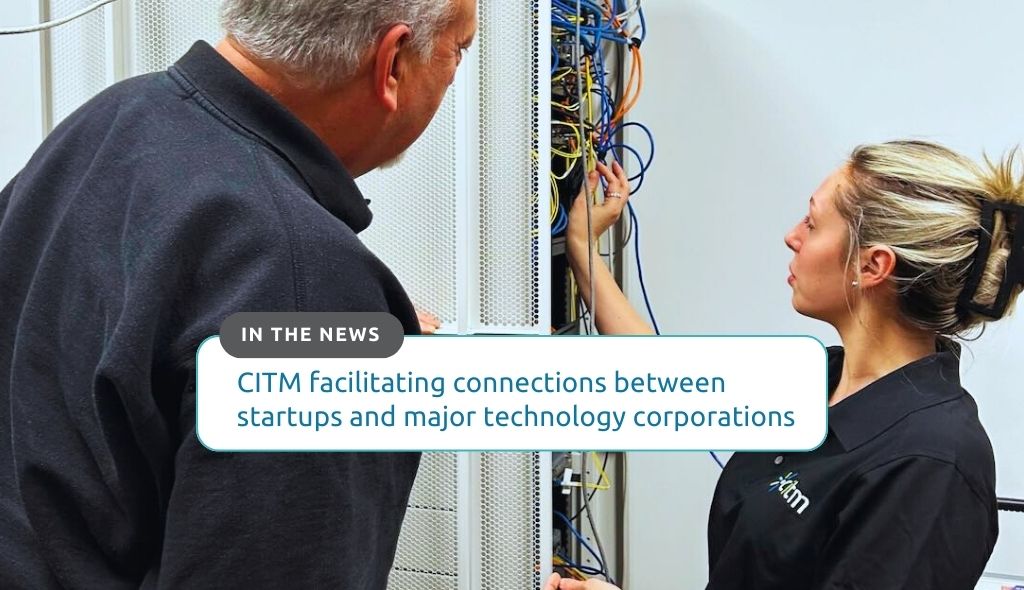This article was sponsored by the Centre for Integrated Transportation and Mobility (CITM) and published in partnership with Electric Autonomy Canada.
Companies in the transportation and technology sector, such as Nokia and Magna, are teaming up with small businesses through CITM’s Innovation Challenges
Start-up businesses face numerous hurdles on their path to success.
Entrepreneurs not only need to come up with an idea, but make sure the business will be viable for years to come.
That’s why the Centre for Integrated Transportation and Mobility (CITM), a technology innovation accelerator financed by the Ontario provincial government, is looking to connect emerging companies with major players in the automotive and technology sectors.
“It’s hard to go at it alone when you’re a start-up,” says Richard Dunda, director of CITM.
“Especially if you’re an engineer and your thought process is, ‘If I build this, somebody will come buy it.’ That’s just not the way it works.”
CITM launched in Hamilton six years ago. It is one of seven regional technology development sites in the Ontario Vehicle Innovation Network (OVIN).
The centre currently has about 50 active start-ups in its network. However, that number fluctuates each year depending on the success of the individual business.
Annually twenty-five to thirty-five new clients register with CITM. “This is a government-funded program. There is no cost to participate in CITM,” adds Dunda.
A transportation focus
CITM’s central location is a key reason for its success.
“Hamilton is a transportation hub with goods moving through many ports or highways that connects to another region in southern Ontario or the U.S. Because of all that activity, CITM primarily partners with companies who build multi-modal transportation innovations.
Everything from a small sidewalk delivery robot to a train,” Dunda explains. “We have clients that are everywhere in between.”
Over the past five years, CITM’s clients have developed new hydrogen energy resources, increased e-motorcycle safety, and changed the way refrigerated goods are shipped. The centre also supports the development of both electric and hydrogen powertrains and autonomous vehicle technology.
“We have companies that are working in nanomaterials that are targeted at the battery sector,” continues Dunda. In addition, CITM also has its own wireless 4G and 5G network that partner companies can use for free. It allows them to test connectivity, algorithms, AI, machine learning as well as hardware.
“Automated and autonomous vehicles usually need connectivity with some digital infrastructure, thus the 4G and 5G network.”
Innovation Challenges
Although most of the OVIN hubs support the growth of EV and technology solutions, CITM is designed to help start-up businesses develop, test and launch their innovation.
Since its inception, the centre has built relationships with established companies — Magna, Parsons and Nokia — who are hoping to partner with smaller companies to address problems in the transportation and technology sectors.
CITM hosts those connections through Innovation Challenges, a series of competitions during the year that invites start-ups to present a solution — through a questionnaire and video — that a larger company may have overlooked.
“It’s a targeted program to help companies discover innovation that is happening ‘at the edge,’” Dunda says. “Big companies don’t always innovate well. Typically, innovation is happening in smaller companies. The problem is how do corporations find [those companies]?”
In Fall 2023, for example, Parsons hosted an Innovation Challenge that asked businesses to come up with new ways to increase electric forms of micro-mobility transportation.
The winning applicants designed a mobile charging station and enclosed e-bikes and will now have access to funding and pilot testing to turn their visions from a dream to reality.
Eyeing the future
Moving forward, Dunda hopes that CITM continues to serve as an innovation facilitator.
Specifically, he is eager to see the CITM innovation challenge program continue to support innovation, reach new markets and partners, and create a constant churn of fresh business ideas throughout the sector.
Because whenever there’s more innovation, he added, it creates value for both consumers and companies.
“The more activity there is between innovation and the companies that need, or that can support innovation, the better it is for everybody in the ecosystem.”
Do you have an innovative technology or idea to help shape the future of transportation?
Innovation Factory and CITM can help you build strategic partnerships and access opportunities to grow your business.






